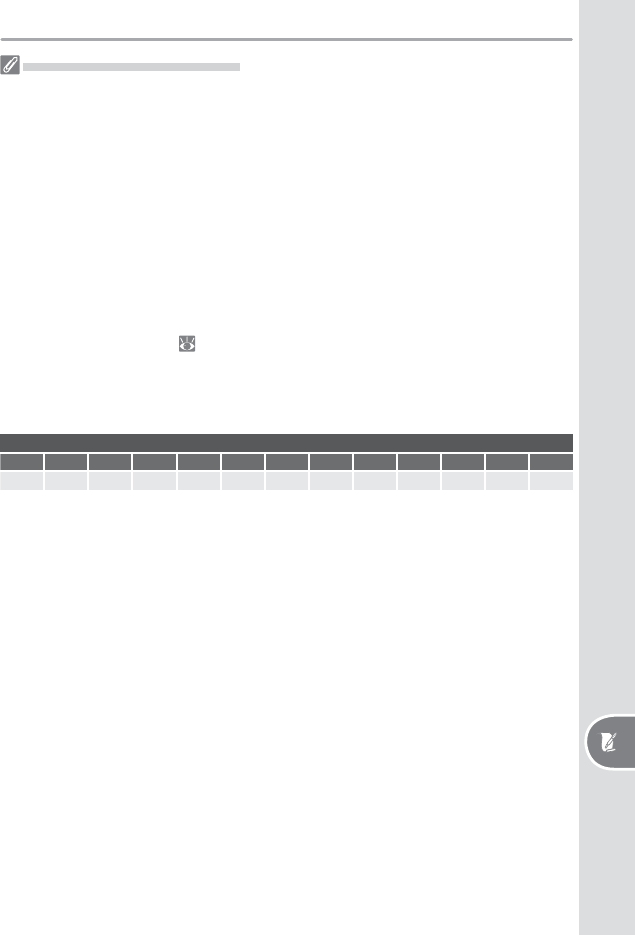
179
Technical Notes—Optional Accessories
Notes on Optional Speedlights
Refer to the Speedlight manual for detailed instructions. If the Speedlight supports the
Creative Lighting System, refer to the section on CLS-compatible digital SLR cameras. The
D200 is not included in the “digital SLR” category in the SB-80DX, SB-28DX, and SB-50DX
manuals.
If Auto FP High-Speed Sync is not used, the shutter will synchronize with an external fl ash
at speeds of / s or slower.
i-TTL fl ash con trol can be used at ISO sensitivities be tween 100 and 1600. At values over
1600, the desired re sults may not be achieved at some ranges or aperture settings. If the
fl ash-ready indicator blinks for about three seconds after a photograph is taken, the fl ash
has fi red at full power and the photograph may be underexposed.
When an SB-800 or SB-600 is attached, AF-assist illumination and red-eye reduction are
performed by the optional Speedlight. The camera provides AF-assist illumination when
other Speedlights are used (
58–59).
Auto power zoom is available only with SB-800 and SB-600 Speedlights.
In programmed auto, the maximum aperture (minimum f/-number) is lim it ed ac cord ing to
sen si tiv i ty (ISO equivalency), as shown below:
Maximum aperture at ISO equivalent of:
100 125 160 200 250 320 400 500 640 800 1000 1250 1600
4 4.2 4.5 4.8 5 5.3 5.6 6 6.3 6.7 7.1 7.6 8
For each one-step increase in sensitivity (e.g., from 200 to 400), aperture is stopped down
by half an f/-stop. If the maximum aperture of the lens is smaller than given above, the
maximum value for aperture will be the maximum aperture of the lens.
When an SC-series 17, 28, or 29 sync cable is used for off -camera fl ash photography, cor-
rect exposure may not be achieved in i-TTL mode. We recommend that you choose spot
metering to select standard i-TTL fl ash control. Take a test shot and view the results in the
monitor.
In i-TTL, use the fl ash panel or bounce adapter provided with your Speedlight. Do not use
other panels such as diff usion panels, as this may produce incorrect exposure.


















